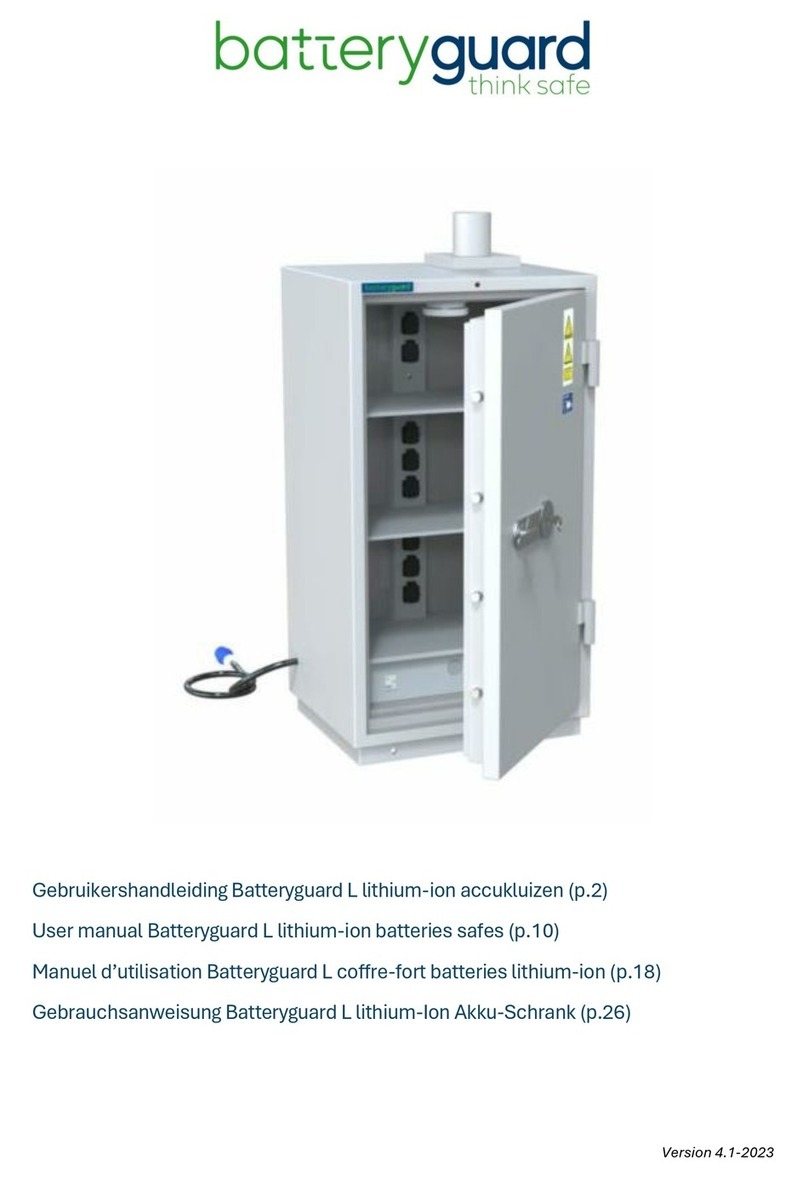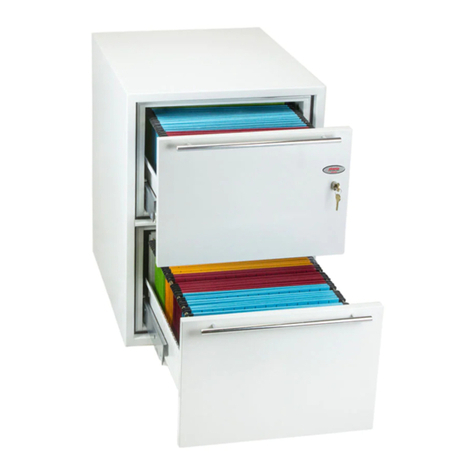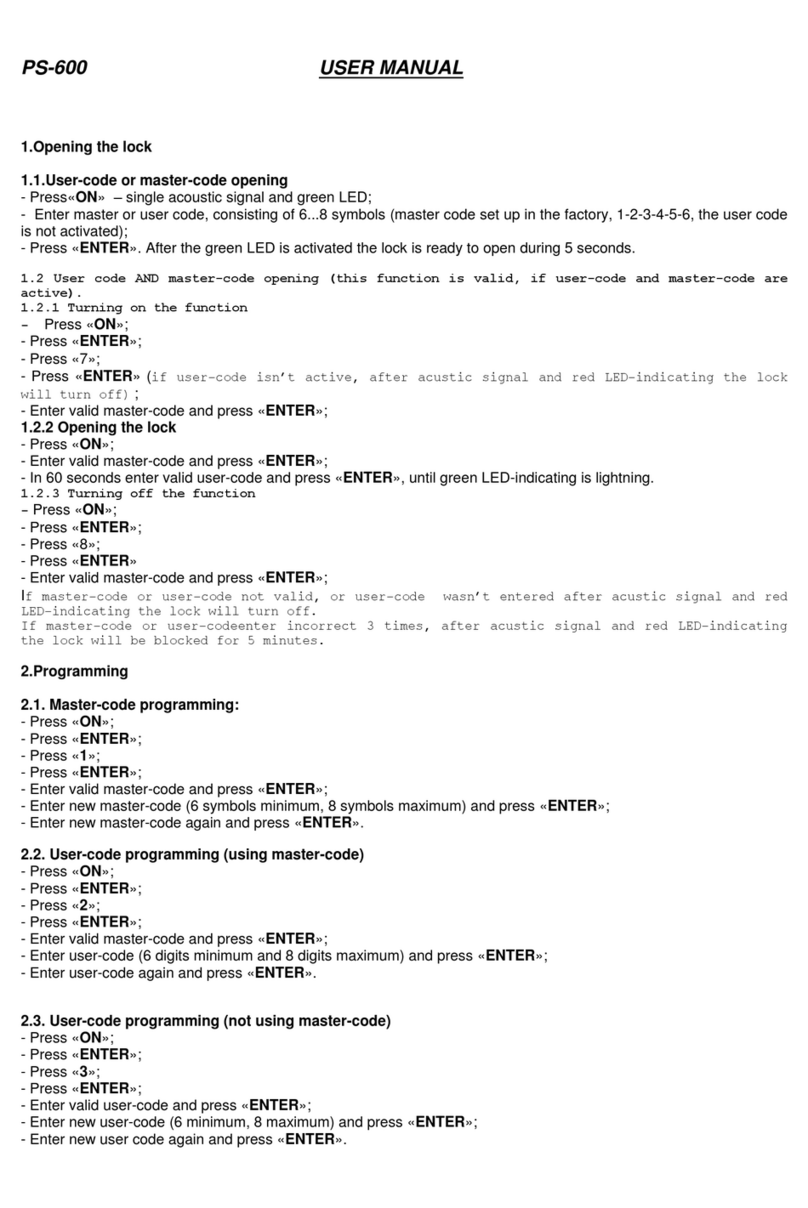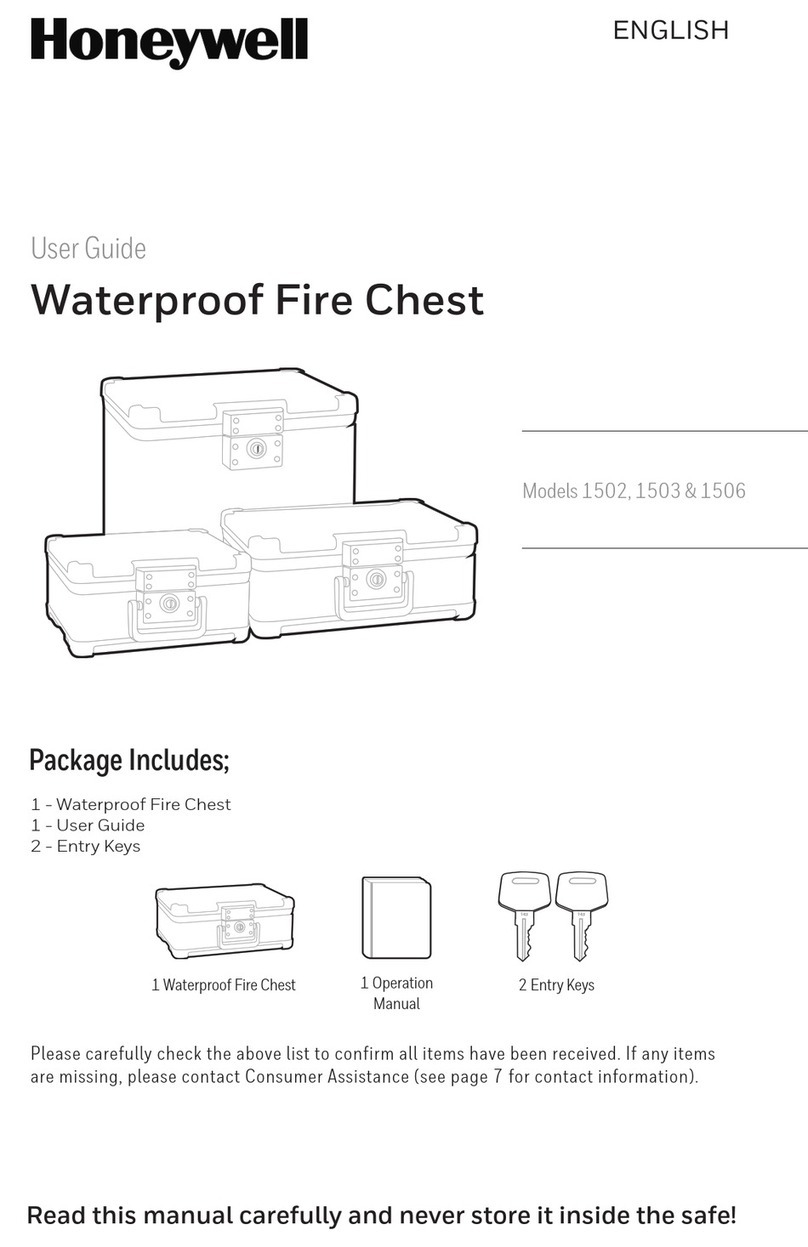batteryguard XL User manual

Gebruikershandleiding Batteryguard XL lithium-ion accukluizen (p.2)
User manual Batteryguard XL lithium-ion batteries safes (p.14)
Manuel d’utilisation Batteryguard XL coffre-fort batteries lithium-ion (p.26)
Gebrauchsanweisung Batteryguard XL Lithium-Ion Akku-Schrank (p.39)
Version 5.1-2023

2
Beste gebruiker,
Gefeliciteerd met de aanschaf van uw lithium-ion kluis! Lees deze handleiding voor gebruik aandachtig
door. Aan het eind vindt u diverse bijlagen met veiligheidsinformatie. Bewaar de handleiding en deze
informatie als naslagwerk.
Voor een optimale en langdurige werking en de veiligheid van de kluis te waarborgen, raden wij u aan om
de kluis regelmatig te onderhouden. U kunt zelf een aantal zaken goed in de gaten houden, maar u kunt
deze zorg ook aan ons uit handen geven door het afsluiten van een serviceabonnement. Lees hierover meer
in hoofdstuk 11.
Heeft u vragen over uw Batteryguard lithium-ion accukluis of is er onverhoopt een storing opgetreden?
Neem dan contact op met het Nauta Serviceteam.
Met vriendelijke groeten,
Het Nauta Serviceteam

3
1.Algemene veiligheidsadviezen
•Lees de volledige gebruikershandleiding door voordat u de kluis in gebruik neemt. Foutief gebruik en
niet opvolgen van waarschuwingen en voorschriften in deze handleiding kan leiden tot ernstig letsel.
•Deze kluis is bestemd voor het opslaan en opladen van (lithium-ion) accu’s. Gebruik alleen originele
fabrieksaccu’s en neem alle waarschuwingen, aanwijzingen, afbeeldingen en gegevens die u bij de accu
ontvangt, in acht.
•Wijzig nooit zelf iets aan de instellingen van de kluis, maar neem altijd eerst contact op met het Nauta
Serviceteam.
•Laat de elektrische installatie alleen repareren door gekwalificeerd en vakkundig personeel en alleen
met originele vervangingsonderdelen.
•Het serviceluik mag enkel voor veiligheidsinspecties geopend worden en alleen door het Nauta
Serviceteam en gekwalificeerd, vakkundig personeel.
•Houd altijd de kluisdeuren gesloten zodat bij een calamiteit de brand binnen de kluis blijft.
•Open nooit zelf de kluisdeuren als de sirene afgaat. Bel 112 en laat de brandweer de kluis openen.
•Leg niets op de kluis zodat de rookgasafvoer en het ventilatierooster altijd vrije doorgang hebben.
•Plaats de kluis in een goed geventileerde ruimte. Als er brand ontstaat, kunnen er namelijk giftige
rookgassen ontstaan.
•Zorg ervoor dat onbevoegden die geen instructie hebben gehad geen toegang hebben tot de kluis.
•De lithium-ion kluis is uitgerust met een CEE-stekker. Zorg ervoor dat de spanning van de stroombron
overeenkomt met de spanning van de CEE-stekker van de kluis.
•Overschrijd nooit het maximaal aangegeven ampèrage.
•Gebruik alleen originele en onbeschadigde snoeren en stekkers voor het opladen van accu’s.
•Sluit de lader altijd direct aan op de stopcontacten in de kluis en plaats hiertussen nooit losse
stekkerdozen of verlengsnoeren.
•Controleer of de zekering van de kluis omhoog staat (positie 1). De zekering bevindt zich in de kluis aan
de buitenzijde van onderste technische ruimte.
2.Garantie
•Nauta verleent als fabrikant op de in de gebruikershandleiding aangegeven kluizen een garantietermijn
van 24 maanden vanaf leveringsdatum.
•De Batteryguard lithium-ion kluizen met brandblussysteem moeten elke vijf jaar onderhouden en
geïnspecteerd worden. Aan de binnenzijde van de kluisdeur ziet u op het onderhoudsetiket wanneer de
eerstvolgende onderhoudsbeurt moet plaatsvinden. Zie voor verdere informatie hoofdstuk 10,
Onderhoud, service en storingen.
3.Transport
•Verplaats de kluis rechtop en met een palletwagen. Wij adviseren om de kluis door een gespecialiseerd
bedrijf te laten plaatsen op de locatie.
•Ondeskundig transport kan leiden tot verborgen schade aan de kluizen en aan de beschermende
brandwerende werking.

4
4.Kluis in gebruik nemen
Opstelling
•Plaats de kluis waterpas en op een stevige ondergrond.
•De kluis kan niet kantelen of omvallen door het hoge gewicht van de kluis.
•Plaats de lithium-ion kluis op een plek waar de deuren 180° open kunnen.
•Zorg ervoor dat de kluis in een goed geventileerde ruimte staat. Afhankelijk van de duur van de brand
kunnen er giftige rookgassen vrijkomen.
In bedrijfstelling
•Aan de buitenzijde zit een stroomkabel van ca. 2,5 meter die standaard voorzien is van een 3-polige CEE
stekker 230V 16A, of een 5-polige CEE stekker 400V 32A. Sluit deze stekker rechtstreeks aan op een
geschikte wandcontactdoos. Gebruik daarbij geen verlengsnoer.
•Zorg ervoor dat de stroomkabel van de kluis aangesloten wordt op een vrije groep, conform de NEN
voorschriften.
•Controleer of de zekering van de kluis omhoog staat (positie 1). De zekering bevindt zich in de kluis aan
de buitenzijde van de onderste technische ruimte.
•Plaats de accu op een niveau waar het groene lampje brandt. De kluizen zijn namelijk uitgevoerd met
een automatisch laadsysteem wat betekent dat de accu’s op elk niveau om de twee uur worden
opgeladen.
•Model met deurdranger: zorg ervoor dat de deurdrangers ‘aan’ staan en de kluis op het stroomnetwerk
aangesloten is.
•Let op dat niet het maximale wattage van de kluis wordt overschreden (230V kluis: 3600W, 400V kluis:
10800W).
•Zorg er bij de legborden voor dat de maximale draagkracht van ca. 75 kg niet overschreden wordt.
•Houd altijd de kluisdeuren gesloten zodat bij een calamiteit de brand binnen de kluis blijft.
•Leg niets op de kluis zodat de rookgasafvoer en het ventilatierooster altijd vrije doorgang hebben.
Manuele vergrendeling: openen en sluiten
Kluisdeuren openen
•Ontgrendel eerst de rechter en daarna de linker deur en draai de hendel(s) naar de open-positie.
•Open de deuren zover mogelijk zodat ze open blijven staan, maar zonder te forceren.
Kluisdeuren sluiten
•Sluit eerst de linker en daarna de rechter deur en draai de hendel(s) naar de gesloten-positie.
•Als de kluisdeuren open blijven staan, zal er na 2 minuten een sirene afgaan ten teken dat de
deuren gesloten moeten worden.
•Het sluiten van de deuren gebeurt volledig mechanisch en met zeer geringe kracht van het
regelwerk. Het sluitproces is daardoor ongevaarlijk en gevaar voor verwonding is daarmee gering.

5
Automatische deurvergrendeling: openen en sluiten
(alleen voor modellen met deurdrangers)
Kluisdeuren openen
•Ontgrendel eerst de rechter en daarna de linker deur en draai de hendel(s) naar de open-positie.
•Open de deuren zover mogelijk zodat ze open blijven staan, maar zonder te forceren.
Kluisdeuren sluiten
•Sluit eerst de linker en daarna de rechter deur en draai de hendel(s) naar de gesloten-positie.
•Als de kluisdeuren open blijven staan, zal er na 2 minuten een sirene afgaan ten teken dat de
deuren gesloten moeten worden.
•De deuren sluiten automatisch als er een calamiteit in de kluis is en de rookmelder afgaat.
•Zorg ervoor dat er niets in de kluis ligt wat het sluiten van de kluis kan blokkeren.
•Het sluiten van de deuren gebeurt volledig mechanisch en met zeer geringe kracht van het
regelwerk. Het sluitproces is daardoor ongevaarlijk en gevaar voor verwonding is daarmee gering.
5.Accu opbergen en opladen
De Batteryguard lithium-ion kluis is voorzien van een 230V of 400V stroomvoorziening om accu’s op te
laden en hebben een automatisch laadsysteem. Dit betekent dat de accu’s op elk niveau om de twee uur
worden opgeladen.
Totaal vermogen per wandcontactdoos:
Maximale spanning
230V
400V
Zekering
16A
32A
Maximaal vermogen
3600W
3600W (per niveau)
Let op: dit kan afwijken. Overleg altijd met de installateur voor de juiste aansluiting.
Veilig opladen:
•Gebruik alleen de originele lader van de accu.
•Gebruik alleen de bestaande stopcontacten in de kluis.
•Sluit geen losse contactdozen of verlengsnoeren aan.
•De kluis werkt alleen goed en veilig als u de deuren gesloten houdt.
6.Aarding
Afhankelijk van klantspecifiek gebruik van de Battteryguard lithium-ion kluis kan een aardpuntaansluiting
vereist zijn. Laat u hiervoor adviseren door gekwalificeerd, vakkundig personeel.

6
7.Ventilatie
•Zorg ervoor dat de kluis in een goed geventileerde ruimte staat. Afhankelijk van de duur van de brand
kunnen er giftige rookgassen vrijkomen.
•De kluis is voorbereid voor mechanische rookgasafvoer. Zo kunnen rookgassen die ontstaan bij een
eventuele accubrand naar buiten toe afgevoerd worden.
8.Kluis openen na brand
•Open nooit zelf de kluisdeuren als de sirene afgaat. Bij de modellen met waarschuwingslampjes brandt
ook de lamp rood. Bel 112 en laat de brandweer de kluis openen.
•Let op, afhankelijk van de duur van de brand kunnen er giftige rookgassen vrijkomen.
•Bel het Nauta Serviceteam als de brand is geblust zodat bekeken kan worden of de blusinstallatie in de
kluis kan worden hersteld en de kluis weer in gebruik genomen kan worden.
•Informeer bij de fabrikant hoe de beschadigde accu’s moeten worden afgevoerd.
Veiligheidsinformatie blusmiddel Berki Cold® Premix
(alleen voor modellen met automatisch blussysteem)
•Voor het bestrijden van de accubrand wordt gebruik gemaakt van het schuimblusmiddel Berki Cold®
Premix.
•Voorzorgsmaatregelen voor het veilig hanteren van het Berki Cold® Premix:
oVermijd inademing en contact met huid en ogen.
oNiet eten, drinken of roken tijdens gebruik.
oProduct is niet brandbaar, niet oxiderend, niet explosief.
•Bent u toch in aanraking gekomen met het blusmiddel?
oBij inademing: persoon in de frisse lucht brengen en laten rusten in een houding die de
ademhaling vergemakkelijkt.
oBij contact met de huid: met veel water afspoelen.
oBij contact met de ogen: voorzichtig afspoelen gedurende een aantal minuten, indien nodig
contactlezen verwijderen; blijven spoelen.
oNa inslikken: de mond spoelen, water drinken. Geen braken opwekken.
•Voor uitgebreide informatie kunt u contact opnemen met het Nauta Serviceteam.

7
9.Verklaring signalen

8
10. Onderhoud, service en storingen
Onderhoud en service
De Batteryguard lithium-ion kluizen moeten elke vijf jaar onderhouden en geïnspecteerd te worden. Aan de
binnenzijde van de kluisdeur ziet u op het onderhoudsetiket wanneer de eerstvolgende onderhoudsbeurt
moet plaatsvinden (alleen voor modellen met automatisch blussysteem).
Verder is het aan te raden om voor de kluizen jaarlijks een kleine onderhoudsbeurt in te plannen. Bel het
Nauta Serviceteam om deze inspecties in te plannen.
Ook is het raadzaam om wekelijks te controleren of de manometers in het groen staan en het
brandblussysteem daarmee goed functioneert (alleen voor modellen met automatisch blussysteem).
Storingen
Wanneer uw storing buiten de garantie valt, kunnen er kosten verbonden zijn aan de service. Bent u
verhinderd voor een reeds gemaakte afspraak of komt de afspraak te vervallen? Neem dan zo spoedig
mogelijk contact met ons op via +31 (0)342 - 455000 om uw afspraak te annuleren. Wij kunnen dan, in
overleg met u, een nieuwe afspraak maken. Wanneer u niet op het afgesproken tijdstip aanwezig bent of
de afspraak niet minimaal 24 uur van tevoren heeft gecanceld, zijn wij helaas genoodzaakt de kosten voor
het bezoek alsnog in rekening te brengen.
Kijk voor de meest actuele servicetarieven op onze website.

9
Bijlage: aansluitschema’s
Aansluitschema 2 niveaus 12V
.

10
Aansluitschema 4 niveaus 12V

11
Aansluitschema 4 niveaus 24V

12
Aansluitschema 4 niveaus 400V

13
Bijlage: verklaring van Overeenstemming

14
Dear User,
Congratulations with the purchase of your lithium-ion safe. Please read this manual carefully
before use. At the end you will find various appendices with safety information. Keep the manual
and this additional information for reference.
For optimal performance and long-term functionality and to ensure the safety and security of the safe,
we recommend regular maintenance. For more information, see chapter 11.
If you have any questions about your Batteryguard lithium-ion safe or in the unlikely event of a
malfunction, please get in touch with the Nauta Service Team.
Yours faithfully,
The Nauta Service Team

15
1.General safety advice
•Please read the entire manual before you start using the safe. Incorrect use and failure to heed
warnings and follow instructions may lead to serious injury.
•This safe is intended for storing and charging lithium-ion and other batteries.
•Only use original manufacturers’ batteries and heed all warnings, instructions, illustrations and
information supplied with the battery.
•Never change the safe settings yourself, always contact the Nauta Service Team.
•Only allow qualified and skilled personnel to repair the electrical system and only allow those
repairs to be undertaken with original parts.
•The service hatch must only be opened for safety and security inspections and only by the
Nauta Service Team and qualified, skilled personnel.
•Always keep the safe doors closed so that any fire is limited to inside the safe.
•Never open the safe doors yourself if the alarm sounds. Telephone the emergency services and
leave it to the fire brigade to open the safe.
•Never impede the smoke duct and the ventilation grill by placing anything on top of the safe.
•Place the safe in a well-ventilated room. In the event of a fire, poisonous gases may be
discharged.
•Ensure that no unauthorised person who has not been instructed in the safe’s use gains access
to it.
•A CEE-form plug is attached to the lithium-ion battery safe. Ensure that the voltage of the
electricity source corresponds with that of the plug.
•Never exceed the maximum amperage indicated.
•Only use original, undamaged cables and plugs for charging batteries.
•Plug the charger directly into the charging point in the safe and never into a multiple socket
and/or extension cable.
•Make sure that the fuse switch in the safe is up (position 1). The fuse switch is inside the safe
on the outside of the lowest technical compartment.
2.Guarantee
•The manufacturer Nauta provides a warranty period of 24 months from the date of delivery on
the safes specified in the manual.
•Batteryguard lithium-ion safes with a fire-suppression system must be inspected and serviced
every five years. The due date of the next service is given on the maintenance sticker on the
inside of the safe door. For more information, see chapter 10, Maintenance, service and faults.
3.Transport
•Move the safe in an upright position with a pallet truck. We recommend that you have the safe
placed in its intended location by a specialist company.
•Improper transport may lead to hidden damage to safes and to their fire proofing and fire
protection.

16
4.Putting the safe into service
Installation
•Place the safe on a firm surface and ensure that it is level.
•The safe cannot tip over and fall due to its heavy weight.
•Place the safe where the doors can open 180°.
•Ensure that the safe is in a well-ventilated room. Depending on its duration, a fire may produce
poisonous gasses
Switching on the safe
•On the outside of the safe is an electricity cable approx. 2.5 metres long that is fitted with a
three-pole CEE-form 230V 16A plug or a five-pole CEE-form 400V 32A plug. Push the plug
directly into a compatible wall socket. Do not use an extension cable.
•Ensure that the safe cable is connected to an exclusive circuit in accordance with NEN
regulations.
•Make sure that the fuse switch in the safe is up (position 1). The fuse switch is inside the safe on
the outside of the lowest technical compartment.
•Place the battery on a shelf where the green light is on. The safes are fitted with an automatic
charging system so that batteries on each shelf are charged every two hours.
•Model with door closers: ensure that the door-closers are ‘on’ and that the safe is
connected to the electricity network.
•Ensure that the maximum power of the safe is never exceeded (230V safe: 3600W, 400V safe:
10,800W).
•Ensure that the maximum load-bearing capacity of the shelves of approx. 75 kg is never
exceeded.
•Always keep the safe doors closed so that any fire is limited to inside the safe.
•Never impede the smoke duct and the ventilation grill by placing anything on top of the
safe.
Manual locking: opening and closing
Opening the safe doors
•First unlatch the right-hand door and then the left-hand door and turn the handle or handles
to the open position.
•Open the doors as far as possible without forcing so that they stay open.
Closing the safe doors
•First close the left-hand door and then the right-hand door and turn the handle or
handles to the closed position.
•If the doors remain open, an alarm will sound after two minutes to indicate that the doors must
be closed.
•Closing the doors is entirely mechanical and requires very little force from the locking
mechanism. There is therefore very little risk involved and there is little danger of injury.

17
Automatic door locking: opening and closing
(only models with automatic door closers)
Opening the safe doors
•First unlatch the right-hand door and then the left-hand door and turn the handle or handles
to the open position.
•Open the doors as far as possible without forcing so that they stay open.
Closing the safe doors
•First close the left-hand door and then the right-hand door and turn the handle or
handles to the closed position.
•If the doors remain open, an alarm will sound after two minutes to indicate that the doors must
be closed.
•The doors will close automatically if a dangerous situation is detected in the safe and the smoke
alarm is activated.
•Ensure that there is nothing in the safe that can prevent the doors from being closed.
•Closing the doors is entirely mechanical and requires very little force from the locking
mechanism. There is therefore very little risk involved and there is little danger of injury.
5.Storing and charging batteries
The Batteryguard lithium-ion safe has an automatic charging system to provide 230V or 400V of electricity
for the batteries in the safe. The charging system means that batteries on each shelf are charged every
two hours.
Total power per charging point:
Maximum voltage
230V
400V
Fuse
16A
32A
Maximum power
3600W
3600W
(per level)
Please note that this may vary. Always consult with the installer for the correct connection.
Safe charging:
•Use the battery’s original charger only.
•Use the charging points as installed in the safe only.
•On no account use multiple sockets and/or extension cables.
•The safe can only work properly and safely and securely if the doors are kept closed.

18
6.Earthing
An earthing connection may be required depending on the client-specific use of the Batteryguard
lithium-ion safe. Seek advice from qualified and skilled personnel.
7.Ventilation
•Ensure that the safe is in a well-ventilated room. Depending on its duration, a fire may produce
poisonous gasses.
•The safe is installed with a mechanically ventilated smoke duct so that smoke and gasses that are
produced by any battery fire can be carried away safely.
8.Opening the safe after a fire
•Never open the safe doors yourself if the alarm sounds. On models where they are installed,
warning lamps will also light up. Telephone the emergency services and leave it to the fire brigade
to open the safe.
•Be warned! Depending on its duration, a fire may produce poisonous gasses.
•Telephone the Nauta Service Team once the fire has been extinguished to see if the fire-
suppression system can be reset and the safe can continue to be used.
•For advice as to the disposal of the damaged batteries, contact the manufacturer.
Safety information for BerkiCold® Premix extinguisher agent
(only for models with an automatic fire-suppression system)
•The extinguisher agent BerkiCold® Premix is used to suppress any battery fire.
•Preventative measures for the safe use of BerkiCold® Premix:
oAvoid inhalation and contact with eyes and skin.
oDo not eat, drink or smoke while handling.
oProduct is non-flammable, non-oxidising and non-explosive.
•If you come into contact with the extinguisher agent:
oInhalation: ensure that the person who has inhaled the agent is brought somewhere
where there is fresh air and allowed to recover in a position that facilitates breathing.
oSkin: wash away with plenty of water.
oEyes: rinse carefully for several minutes, remove contact lenses if necessary and
continue to rinse.
oSwallowing: rinse the mouth out and drink water. Do not induce vomiting.
•For more comprehensive information, contact the Nauta Service Team.

19
9.Signal explanation / models with warning lights
Green light is on continuously
Safe is in operation
Green light does not illuminate
Safe is not in operation, check whether the safe is connected to the power supply
Green light flashes
Safe doors are open, close doors
Loud alarm (door open)
Safe doors are open for more than 2 minutes
Close the doors
Loud alarm (emergency)
Red light flashes
Call the emergency services!
Do not open the safe!
Calamity resolved? Call Nauta Service Team, +31 342 –455 055

20
10. Maintenance, service and faults
Maintenance and service
Batteryguard lithium-ion safes must be inspected and serviced every five years. The due date of the next
service is given on the maintenance sticker on the inside of the safe door (only for models with an
automatic fire-suppression system).
It is also advisable to undertake minor maintenance once a year. Telephone the Nauta Service Team to
make an appointment.
In addition, it is also prudent to check that the pressure gauge is green so that you know that the fire-
suppression system is working properly (only for the models that do have an automatic fire-suppression
system).
Faults
Repairs may incur costs if a problem falls outside of the guarantee. If your appointment cannot take place
for some reason or if it is no longer necessary, get in touch with us as soon as possible on +31 (0)342 -
455000 to cancel it. We can then make a new appointment in consultation with you if necessary. You will
be charged the cost of the visit if you are not present at the agreed time or if the appointment is
cancelled less than 24 hours in advance.
For the most up-to-date service charges, please contact us.
Table of contents
Languages:
Other batteryguard Safe manuals
Popular Safe manuals by other brands

Philips
Philips 1000 Series user manual

PROFSAFE
PROFSAFE KT215N quick start guide
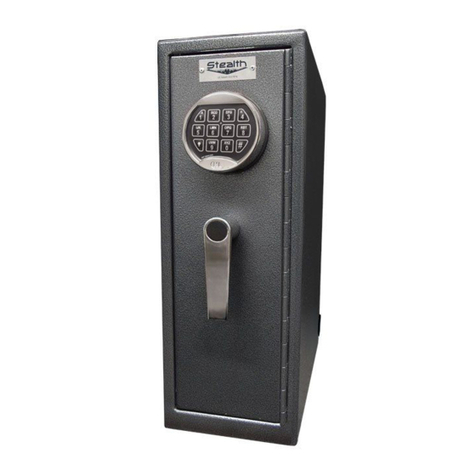
Stealth
Stealth Tactical Dorm User instruction manual
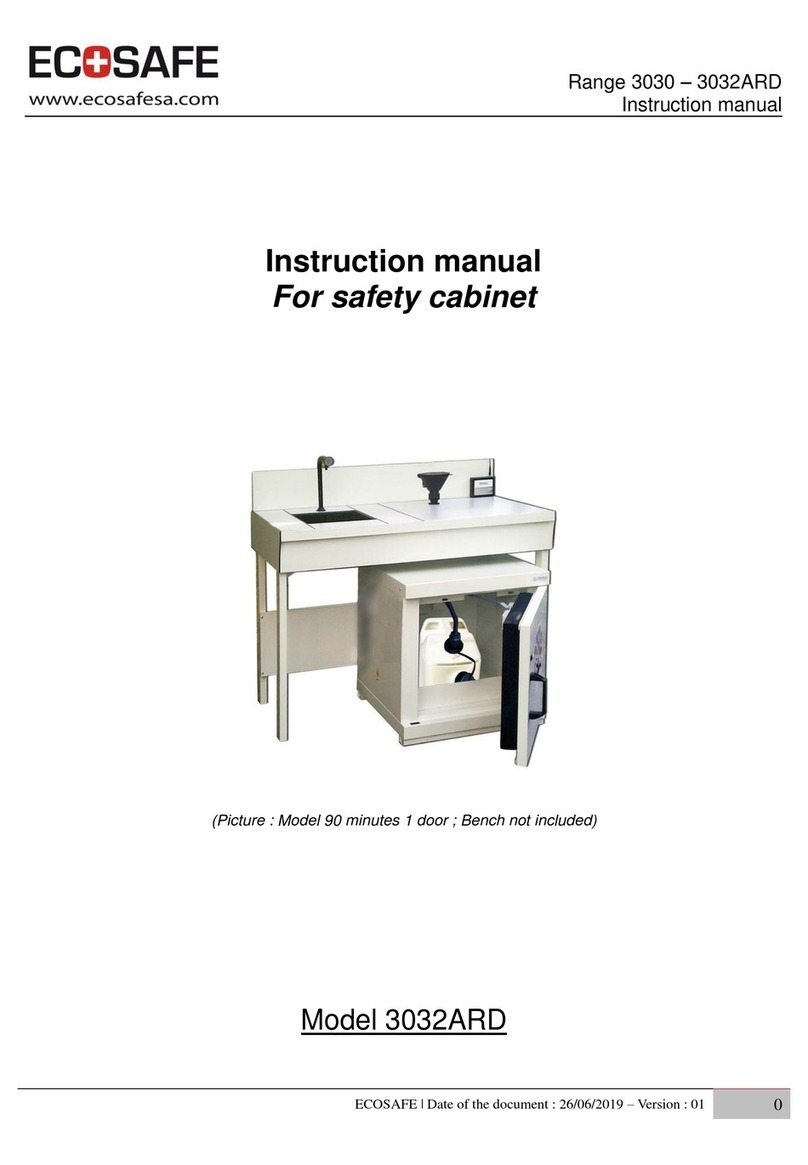
ECOSAFE
ECOSAFE 3032ARD instruction manual
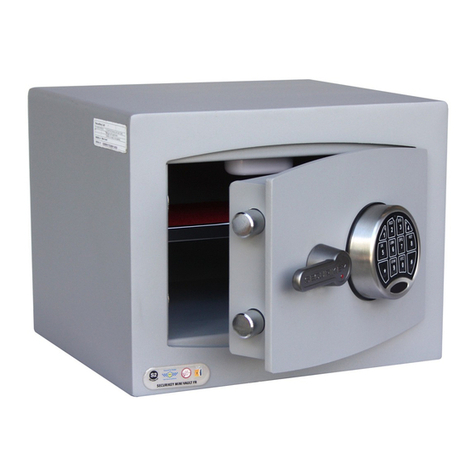
Securikey
Securikey MINI VAULT/FR series Operations & installation guide
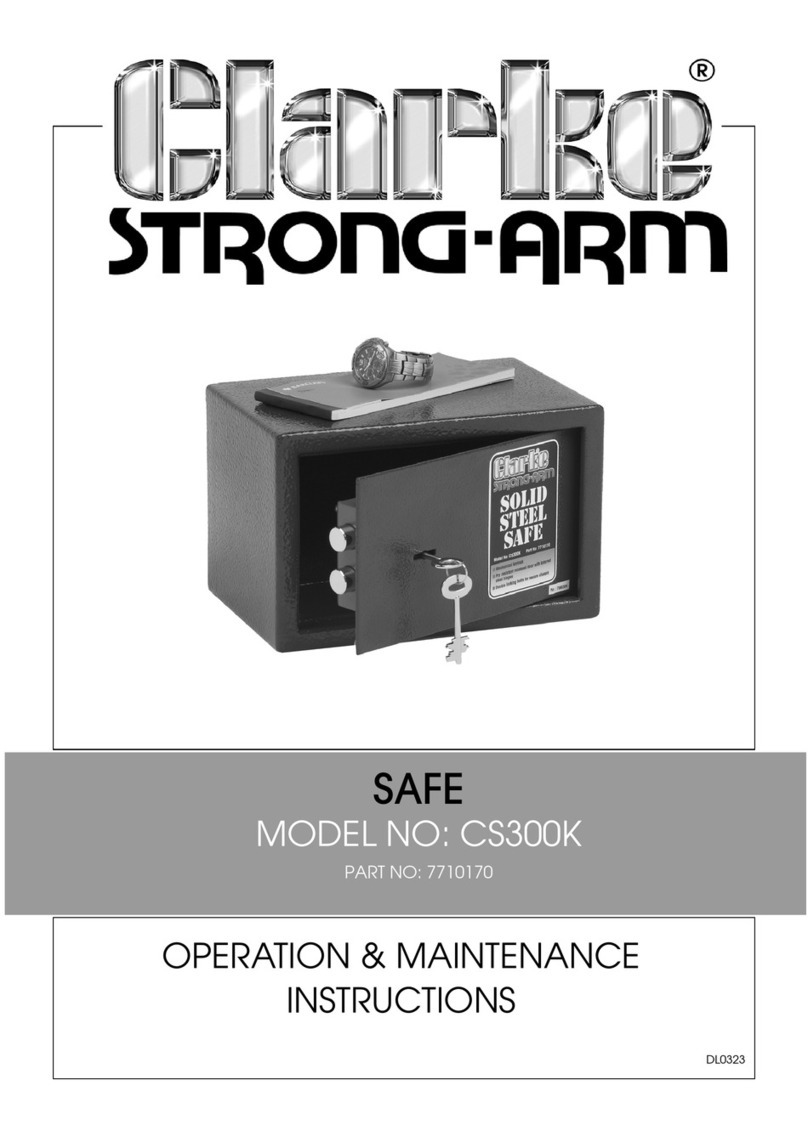
Clarke
Clarke STRONG-ARM CS300K Operation & maintenance instructions

Liberty
Liberty Safe Owner's use and care manual
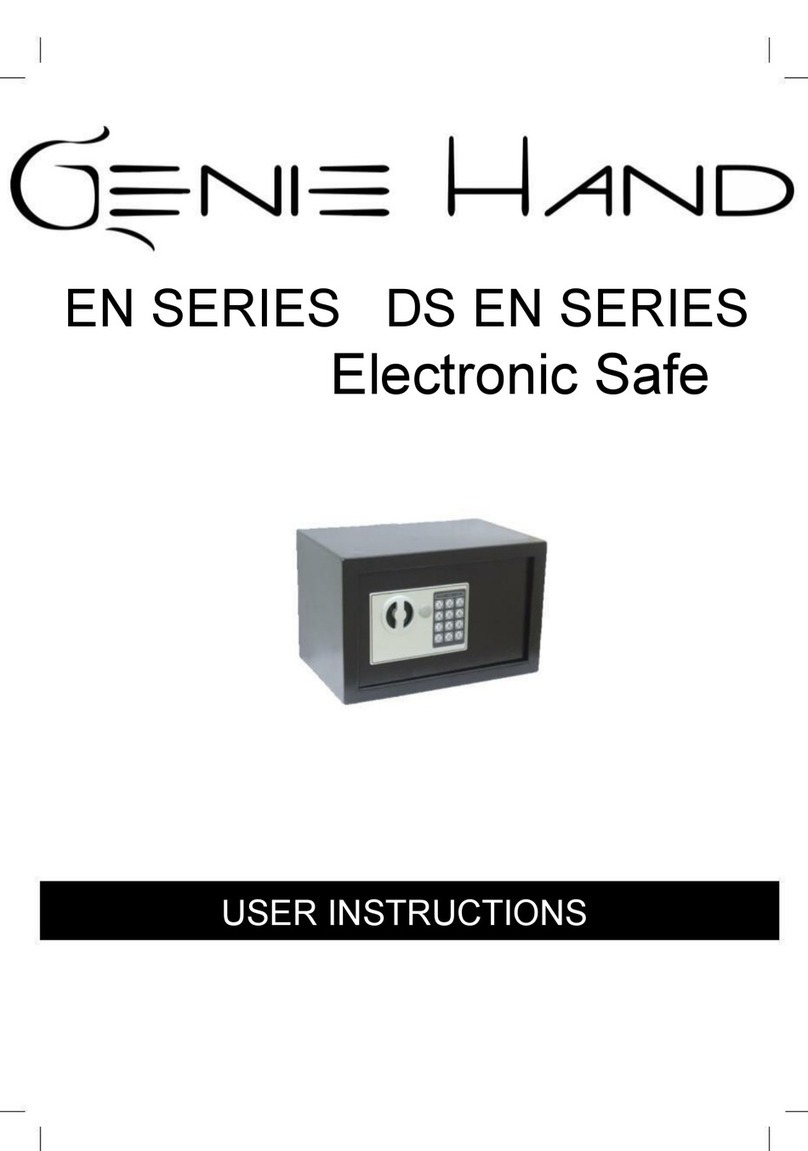
Genie Hand
Genie Hand EN Series User instructions
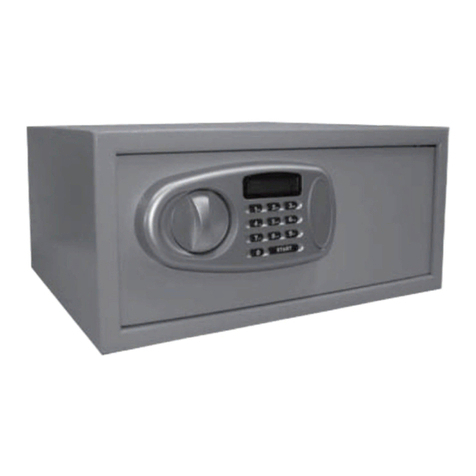
Challenge
Challenge 701-7883 quick start guide
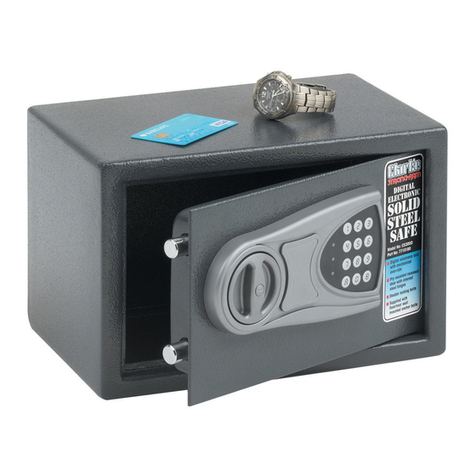
Clarke
Clarke Strong-Arm CS300D Operation & maintenance instructions
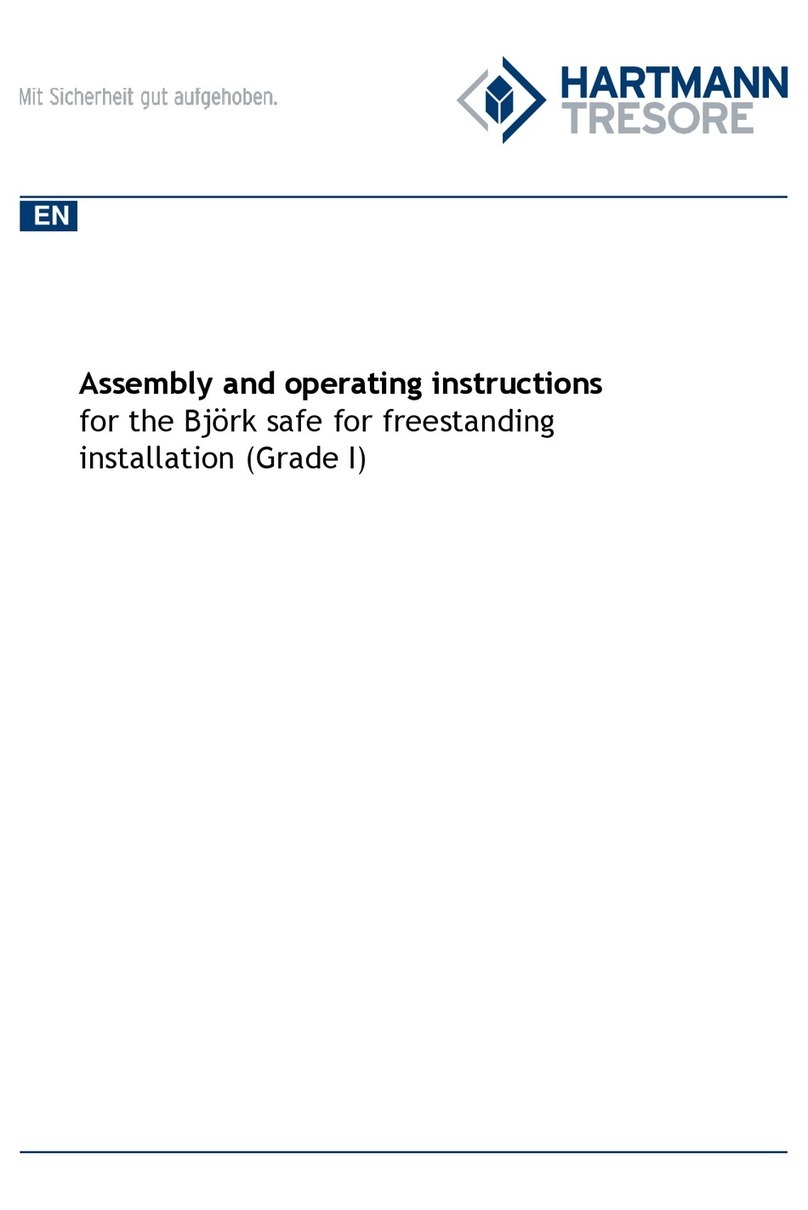
HARTMANN TRESORE
HARTMANN TRESORE Bjork Assembly and operating instructions
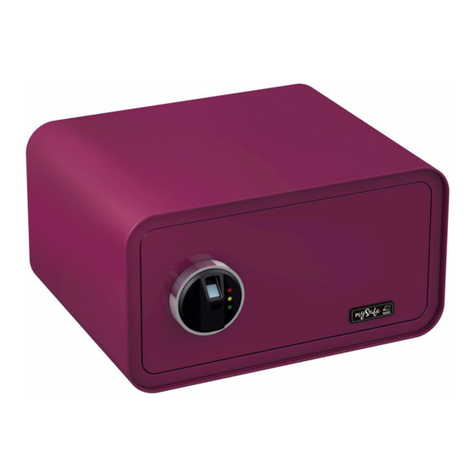
BASI
BASI mySafe instruction manual
